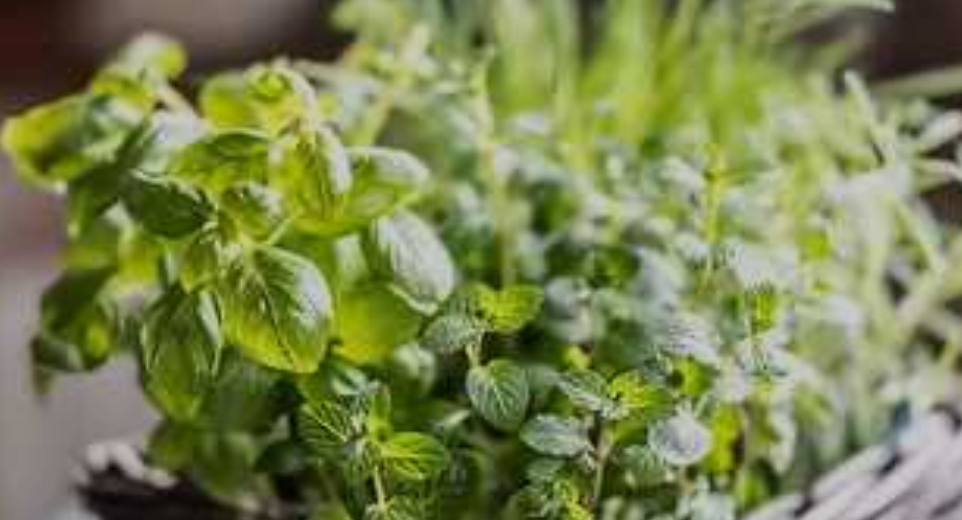Cultivate Your Winter Sanctuary: 7 Veggies & Herbs That Thrive Inside

As the world outside settles into a monochrome palette of gray and white, and the chill in the air drives us indoors, a unique opportunity for renewal emerges. The end of the outdoor growing season doesn't have to mean the end of gardening. Instead, it can mark the beginning of a more intimate, therapeutic practice: cultivating your winter sanctuary indoors.
Transforming a sunny windowsill or a modest corner with a grow light into a productive indoor garden offers more than just fresh produce. It’s an act of defiance against the dormant season, a source of vibrant life and color, and a daily connection to the nurturing rhythm of growth. This winter, trade the bleak landscape for a personal oasis of green with these seven resilient and rewarding veggies and herbs.
The "How": Setting the Stage for Success
Before we delve into the star players, success hinges on creating the right environment. Unlike their summer counterparts, indoor plants in winter face the challenges of limited light and dry, heated air.
-
Light is Non-Negotiable: A south-facing window is the gold standard, offering the most direct sunlight. East or west-facing windows can suffice for herbs, but for robust vegetable growth, you will likely need to supplement. A simple, full-spectrum LED grow light placed 6-12 inches above your plants for 12-14 hours a day can make all the difference.
-
The Right Home: Drainage is critical. Always use pots with drainage holes to prevent root rot. A quality, well-draining potting mix is far superior to dense garden soil.
-
Water Wisely: The top inch of soil should feel dry to the touch before watering. Overwatering is the most common killer of indoor plants, especially in cooler indoor conditions where evaporation is slower.
-
Feed for Growth: Plants in containers exhaust nutrients quickly. A gentle, organic liquid fertilizer (like a fish emulsion or liquid seaweed) applied every two to four weeks will keep your crops vigorous.
The "Which" and "Where": Your Winter Garden All-Stars
Here are seven carefully selected veggies and herbs that not only survive but genuinely thrive indoors during the winter months.
1. The Resilient Leaf: Swiss Chard
-
Why It Thrives: Chard is remarkably adaptable and tolerates lower light conditions better than many other greens. Its colorful stems—vibrant red, yellow, or pink—add a stunning visual element to your indoor garden.
-
How to Grow: Plant in a pot at least 8 inches deep. Harvest the outer leaves continuously, and the plant will keep producing from the center, a method known as "cut-and-come-again."
-
Ideal For: A bright windowsill where its colorful stalks can catch the light.
2. The Speedy Sprinter: Microgreens (Radish, Broccoli, Pea)
-
Why They Thrive: Microgreens are the ultimate instant-gratification crop. They require minimal space, mature in just 7-14 days, and pack a nutritional punch far greater than their mature forms.
-
How to Grow: Sprinkle seeds densely on the surface of a shallow tray of soil, mist lightly, and cover until germination. Once they have their first set of true leaves, snip them just above the soil line.
-
Ideal For: A kitchen countertop under a small grow light, ensuring a constant supply of fresh garnish and salad-toppers.
3. The Fragrant Staple: Rosemary
-
Why It Thrives: While it can be finicky, providing rosemary with enough light and excellent drainage rewards you with its potent, pine-like aroma, evoking memories of summer roasts and cozy stews.
-
How to Grow: It prefers to dry out slightly between waterings. A terra cotta pot, which allows the soil to breathe, is ideal. Good air circulation helps prevent powdery mildew.
-
Ideal For: The sunniest, brightest spot you have, such as a south-facing bay window.
4. The Low-Light Champion: Mint
-
Why It Thrives: Mint is famously vigorous and can grow in less-than-ideal light, though it will be lankier. Its refreshing scent is a natural air freshener.
-
How to Grow: It’s best to grow mint in its own pot, as it can be invasive. Pinch back the tips regularly to encourage a bushier, more compact plant.
-
Ideal For: An east-facing windowsill or even a bright bathroom where it can enjoy the humidity.
5. The Windowsill Workhorse: Scallions (Green Onions)
-
Why They Thrive: Incredibly simple and satisfying, scallions can be regrown from kitchen scraps, making them a zero-waste champion.
-
How to Grow: Place the white root ends (with about an inch of the green) in a glass of water on a windowsill. Once new roots develop, transplant them into soil for a longer-lasting harvest. You can also simply snip what you need, and they will regrow.
-
Ideal For: Any windowsill, making them a perfect project for beginners and children.
6. The Flavor Powerhouse: Thai Basil
-
Why It Thrives: This basil variety, with its distinctive licorice and anise flavor, is often more compact and tolerant of indoor conditions than its Genovese cousin.
-
How to Grow: Provide as much light as possible and keep the soil consistently moist. Regularly pinching off the flower buds will direct energy back into leaf production.
-
Ideal For: The prime real estate under a grow light to ensure strong, flavorful growth.
7. The Compact Wonder: Miniature Dwarf Kale
-
Why It Thrives: Specially bred for small spaces, varieties like ‘Dwarf Blue Curled Vates’ form charming, compact rosettes. They are cold-tolerant, so they don’t mind the slight chill of a windowsill.
-
How to Grow: Plant in a deep pot and harvest the outer leaves as needed. The plant will continue to produce from the center for months.
-
Ideal For: A deep pot on a sunny patio door step or a cool sunroom.
The Overlooked Benefits: More Than a Harvest
The yield from your winter garden is measured in more than grams of produce. The benefits are profound:
-
Mental Wellness: The daily rituals of watering, checking for growth, and tending to plants are proven to reduce stress and anxiety. In the depths of winter, this connection to life is a powerful antidote to Seasonal Affective Disorder (SAD).
-
Culinary Vitality: A single snip of fresh rosemary or a handful of homegrown microgreens can transform a simple winter meal, providing flavors and nutrients that are often lost in transported, store-bought produce.
-
A Living Hobby: It’s a productive, educational, and life-affirming hobby that beautifies your living space and provides a tangible sense of accomplishment.
A Grower's Perspective
We spoke to Maya Jones, an urban horticulturist and author of The Indoor Homestead, for her insight:
“An indoor winter garden isn’t about replicating the summer harvest. It’s about embracing a different pace. It’s a lesson in mindfulness and resilience. You learn to notice the subtle unfurling of a new leaf, the way the stems bend toward the light. That tiny ecosystem on your sill becomes a sanctuary—a quiet, green rebellion against the stillness outside.”
Conclusion
Cultivating your winter sanctuary is an invitation to nurture life and, in doing so, nurture yourself. It’s a promise of fresh flavors, vibrant colors, and the quiet joy of watching something grow. This winter, don’t just wait for spring. Bring a piece of it indoors. Select a sunny spot, choose your plants, and begin the rewarding work of growing your own edible, aromatic oasis.
Frequently Asked Questions (FAQ)
Q1: I don't have a south-facing window. Can I still grow anything?
Absolutely. Herbs like mint and parsley can manage in bright, indirect light from an east or west window. However, for most leafy greens and especially fruiting plants, a supplemental LED grow light is a highly effective and affordable solution to ensure healthy growth.
Q2: How often should I fertilize my indoor winter garden?
Since plants are growing in a confined space and not in the ground, they need regular feeding. A good rule of thumb is to use a half-strength, balanced, organic liquid fertilizer every 2-4 weeks during their active growth period.
Q3: I keep seeing tiny flies around my plants. What are they and how do I get rid of them?
Those are likely fungus gnats. They are attracted to moist potting soil. To control them, let the top layer of soil dry out completely between waterings. You can also use yellow sticky traps to catch the adults and treat the soil with a biological control like Bacillus thuringiensis israelensis (Bti).
Q4: Can I use seeds from my outdoor garden for my indoor plants?
Yes, you can. However, starting with healthy, disease-free seeds from a reputable supplier is often recommended. For a faster start, consider purchasing established seedlings from a garden center for herbs like rosemary and thyme.
Q5: Is it safe to grow edible plants under LED grow lights?
Yes, it is perfectly safe. Full-spectrum LED lights are designed to mimic the sun's wavelengths that plants need for photosynthesis. They do not make the plants toxic, and they are energy-efficient and produce very little heat, making them ideal for indoor use.







